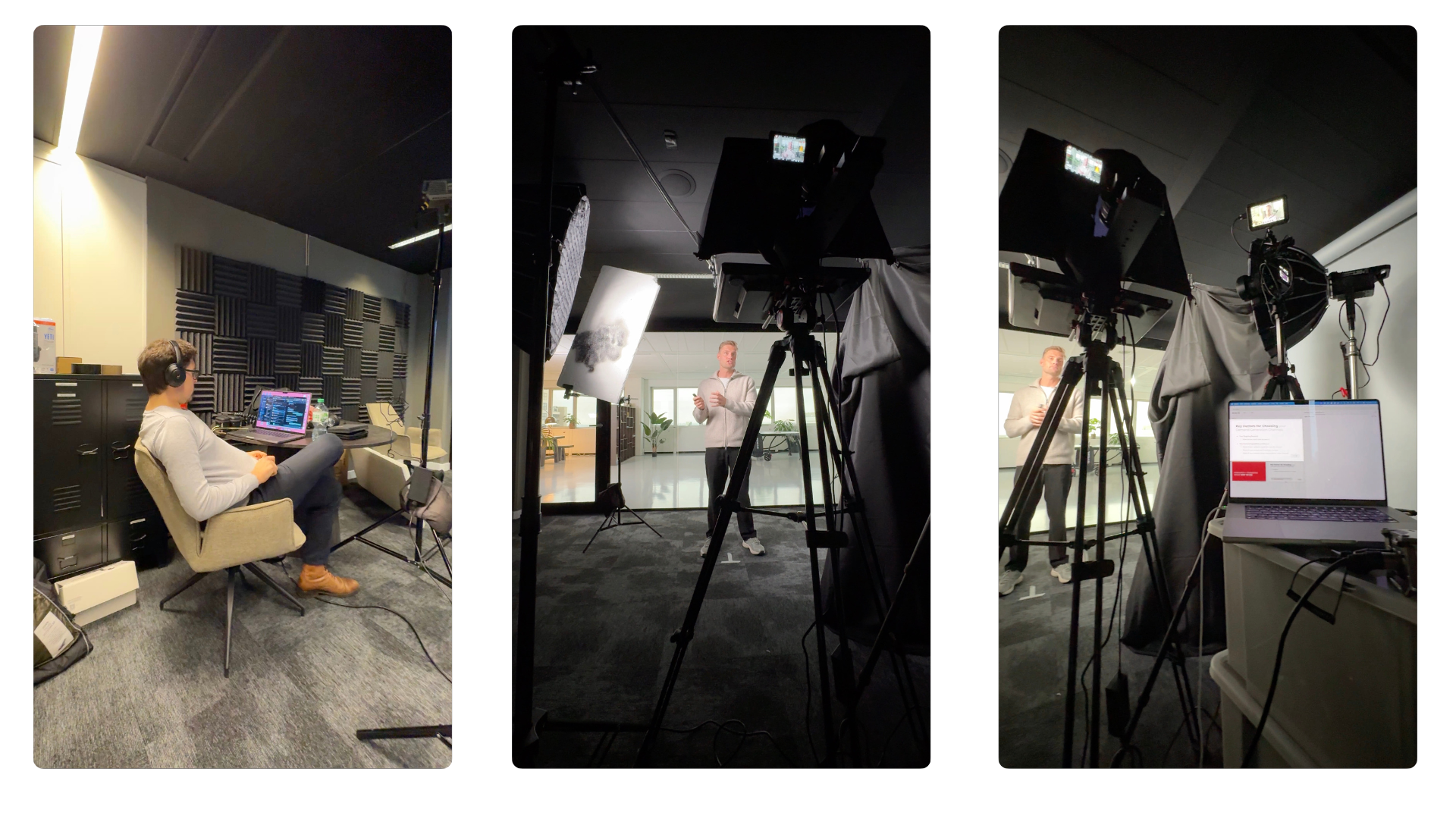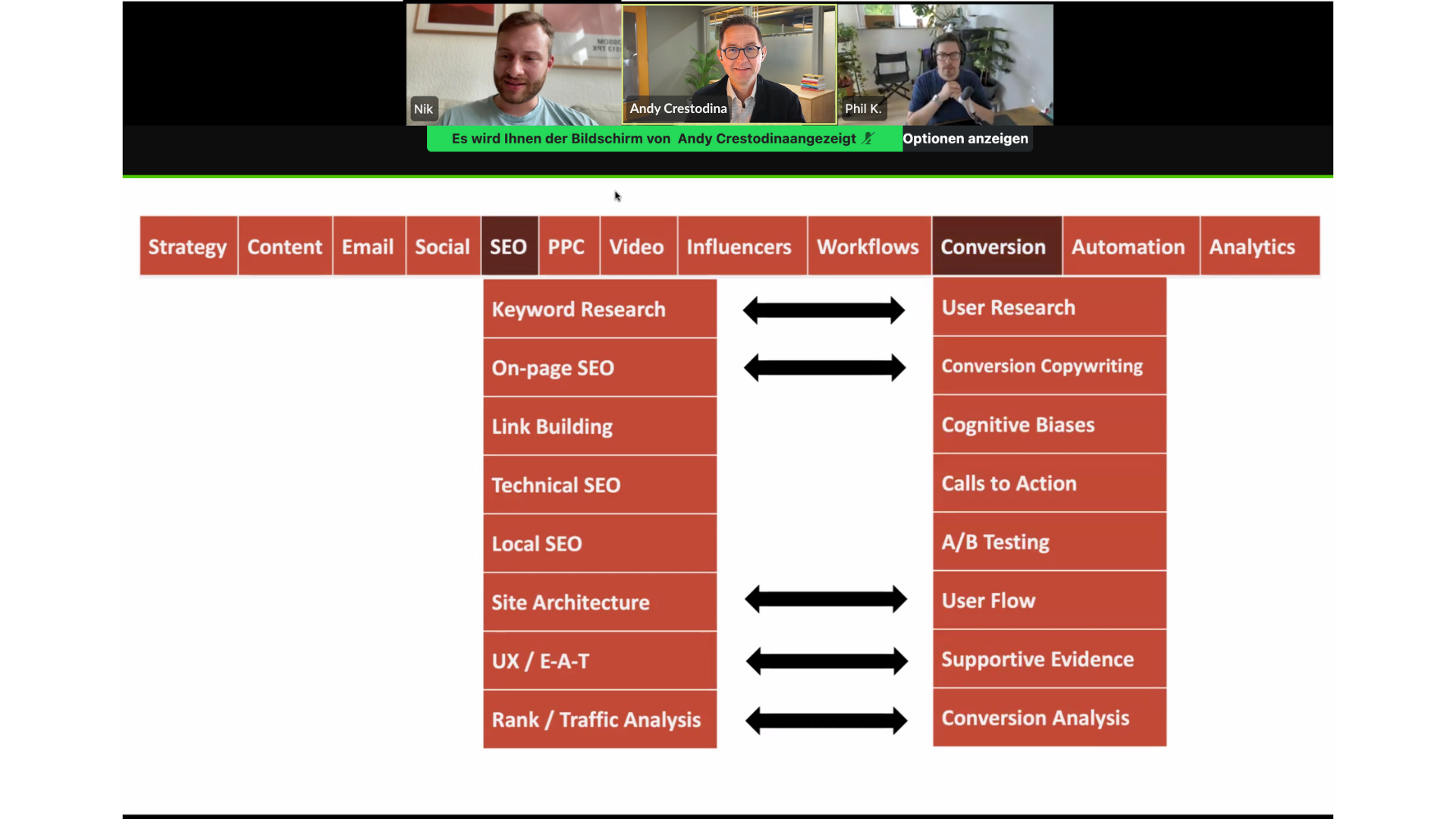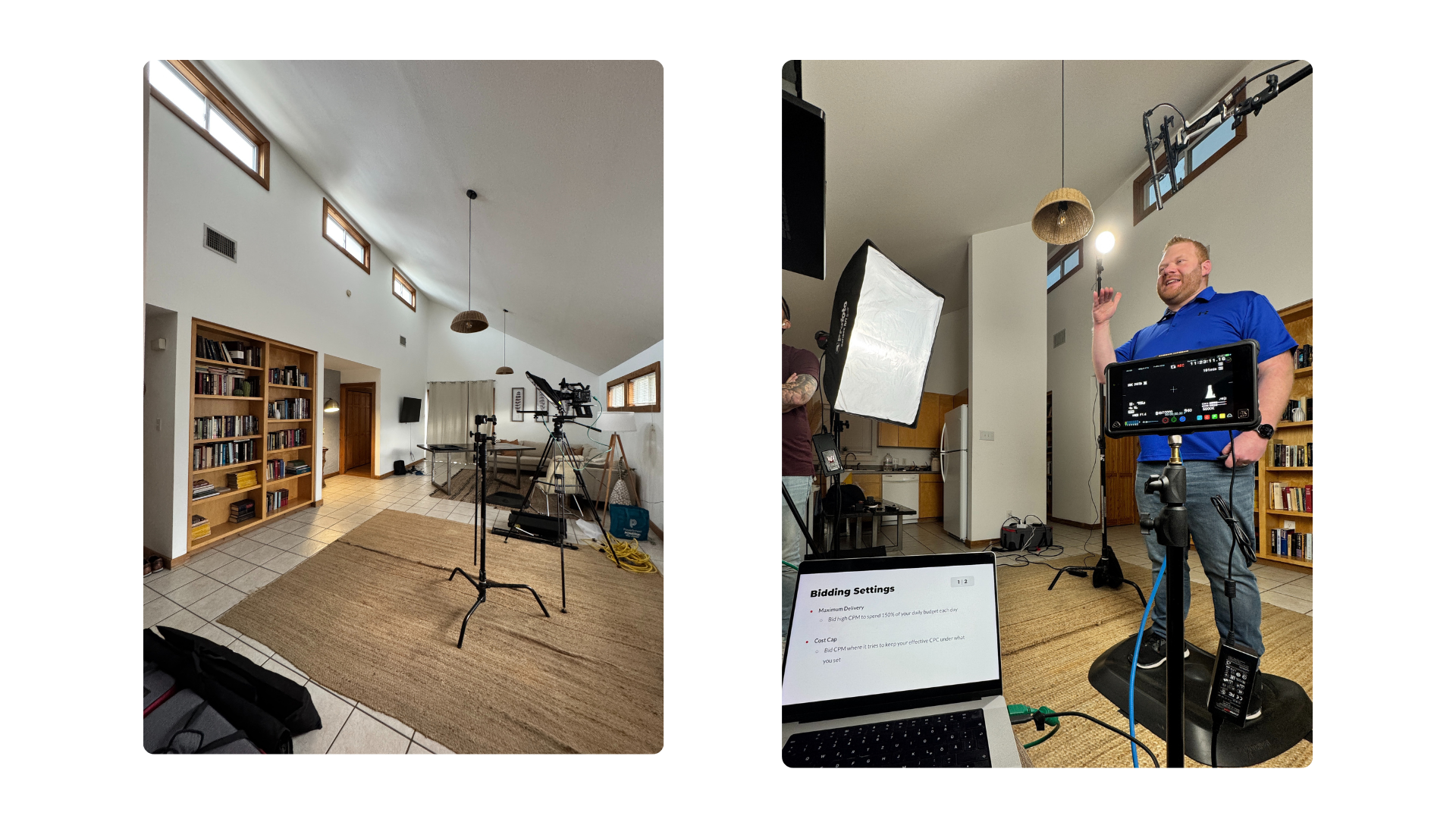.png)
Camera anxiety is the modern professional's hidden barrier. That stomach-churning moment when the red light flashes on and your mind goes blank.
With 91% of businesses using video marketing and audiences demanding authentic on-camera presence, confident camera skills are not optional, they are career-critical.
This guide reveals the psychology behind camera freeze and introduces five proven strategies – from teleprompter techniques to the "draft mindset" – that takes anxious presenters and turns them into confident communicators.
Discover how to deliver your message naturally, without sacrificing authenticity for perfection.
Take 47.
Again.
The camera's red light flashes. It feels like it’s mocking you, as you stumble over the same sentence, that written out, sounded perfect in your head. Your palms are sweaty. Your mind – usually articulate and sharp – has turned into mum’s spaghetti.
So you clear your throat, adjust your seating position, and try again.
"Hi everyone, today we're going to discuss… our new... our new..."
Take 48.
If this sounds familiar, we sit in the same boat. My colleague used to call me "Ninety Take Nik" before I learned how to tame my camera anxiety. And here's what nobody tells you: even Oscar-winning actors get camera anxiety. Even TED speakers who command stages of thousands freeze when that little red light turns on.
The difference is that they've learned how to work with their anxiety instead of against it.
Look, if content is king, video basically makes up the whole castle at this point.
According to a recent Hubspot statistic, 81% of companies use video as a marketing tool, Wyzowl even mentions 90% saying video helped them in increasing brand awareness.
And now? Every founder, entrepreneur, and presenter is just... expected to nail it on camera. Like it's supposed to be second nature.
But here's the thing about video production. It eats time. Especially when you've got multiple people involved. There's this weight to deliver – on time, on message, on brand. Every take needs to match not just what you're saying, but how your brand sounds. How it feels.
Camera anxiety doesn't care who you are. Professional actors get it. Seasoned presenters get it. We all get it.
Humans are social creatures. Evolutionarily speaking, being rejected from your group meant a death sentence. This ancient wiring in our brains makes us hyper-aware of how others perceive us.
And unlike in a real conversation or presentation in front of people, there's no real-time feedback when facing a camera. No chuckles, no frowning faces, no claps. Just the faceless camera lens and the judgment of your worst critic: yourself.
Dr. Laurie Santos from Yale calls this a "psychological vacuum." Without those real-time reactions, your brain just... fills the space with worst-case scenarios. It's isolating. And instead of focusing on your message, you're suddenly hyper-aware of every word choice, every pause, every breath. (She has a great course on well-being, check it out.)
The resulting self-monitoring loop increases nervousness, causes more repeat takes, and makes it harder to speak naturally.

I still remember this specific video project – a training series for university professors and lecturers for online collaboration during Covid in 2020 (see image above). Despite years of in-person presentations, I froze completely when the red light came on. Take after take failed as my mind went blank mid-sentence.
The breakthrough came when I suggested to my colleague we pretend we were just having lunch. He just sat there beside the camera. Nodded. Reacted like a normal person would. And suddenly, I wasn't staring into a lens any more. I was talking to him.
Now, even when recording alone, I visualize speaking to one specific person. This mental technique has taken me from "Ninety Take Nik" to completing most segments in a few takes. Call me "Nailed It Nik."
That experience led me to develop what I call the "80-20 Confidence Framework."
After working with dozens of camera-shy executives and creating over 50 courses, I've developed a simple concept, inspired by the 80/20 rule:
This framework acknowledges that perfect video delivery is neither possible nor desirable. Instead, thorough preparation creates the foundation for confident delivery, while leaving room for the human touches that make content relatable.
Let me show you how this works in practice.
Here are the most effective techniques we've discovered, each applying the 80-20 framework:

A teleprompter? Game changer. When you use it right. Instead of forcing yourself to memorize everything (or worse, completely winging it), it gives you visual cues. Keeps you on track.
Implementation tips:
I would go so far as to analyse the presentation with an AI tool to make sure these points are implemented correctly and thoroughly.
Common faux pas: Here's the beginner mistake: setting the scroll speed too fast. Creates more anxiety, not less. Start slower than what feels natural. You can always speed up once you find your rhythm.
Your delivery will become less robotic, more human, and more you. The teleprompter handles the structure, freeing you to focus on connection and natural delivery.

Think about why camera anxiety happens in the first place. No feedback. No one responds to what you're saying. So flip the script. Turn it into an actual conversation.
The setup:
Have someone join you on a video call and position their face on your teleprompter screen. You'll talk directly to them while looking at the camera lens. They provide natural reactions – nods, smiles, engaged listening – while you deliver your content.
This removes the pressure of having to recall everything from memory while providing cues to keep you on track.
This method leads to authentic content without sounding overly scripted. You're having a real conversation, which naturally creates a more engaging delivery.

Did you ever write a text and get it right the first time? Perhaps an email to an unhappy client? Or do you tend to go back and trim the initial text once you let it sink for a while?
The same is true for video recordings.
Reid Hoffman (the LinkedIn Co-founder) talks about the "70% rule" – ship when something's 70% ready, then improve based on real feedback.
As one Hollywood director once said: "The magic happens in the editing room, not just on set."
A talented video editor can later remove filler words and stitch together the takes that sounded the best. If you're reading this, you're probably in it for the long run. Produce, learn, iterate.

The 80% (Preparation):
A familiar, distraction-free recording environment can significantly ease nerves.
What this means "on set" (can also be your home office):
Fun fact: Professional studios use "warm lighting" (around, 3200K) instead of those harsh studio lights. Not just for how it looks. It actually makes you feel more comfortable psychologically.
When your space feels safe, you stop managing anxiety and start delivering your message.

Routine builds confidence. The more you record yourself, the more comfortable you become. As James Clear puts it in his best-selling book Atomic Habits: Get your reps in.
Here's how to build that routine:
And look... knowing your topic inside and out helps more than any technique. If you're on shaky ground or unprepared, stick with bullet points. They give you structure without locking you into rigid scripts.
Consistent practice transforms mechanical delivery into natural communication. You stop thinking about the camera and start thinking about your message.
Even the most prepared presenters face technical challenges. Here's how to handle them with confidence:
Keep in mind: Technical problems create relatable moments that can actually increase audience connection.
Audiences are getting sharper. They can smell overproduced content from a mile away. The creators who'll win are the ones who figure out how to be professional without losing their personality.
Of course, we have to touch on the topic of AI. It's a double-edged sword. On one hand, it allows for easy correction, and you can generate more content than you ever could, in record speeds. Tools like Synthesia or HeyGen allow for virtual presenting, or take it one step further and create an AI twin of yourself with Veed.io and similar tools.
But even though the tech gets better and better, we also see that people want content from... you know, people. The demand for in-person events gets bigger again, and interaction with AI assistants is still dreaded. These tools are of course still very new and will develop. And we, as people, need to find ways where working with AI makes sense, and where the "human touch" gets more and more valuable.
What this means for you: Don't ditch your quality standards. Just shift the focus from perfect delivery to real connection through the camera.
Getting over camera anxiety takes time. But with the right approach, you can feel as natural on camera as you do talking to a friend.
Stop chasing perfection. Chase connection. Prep your space so it feels like home.
And if your topic's complex – get a teleprompter. Your audience doesn't want a polished robot. They want you. Your expertise, your passion, your personality.
Download our free "Camera Confidence Checklist" – it's a printable reminder you can keep handy during recordings.
What are your strategies to overcome camera anxiety? Share your experience and tips with us.